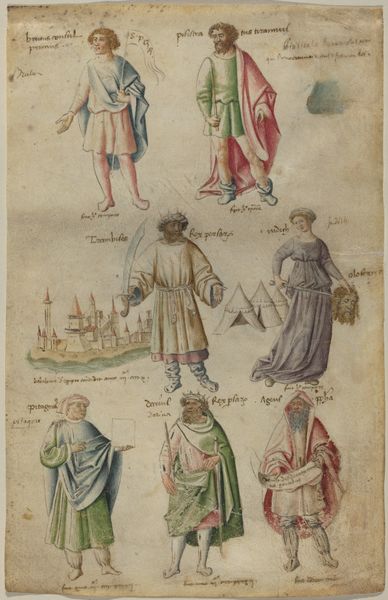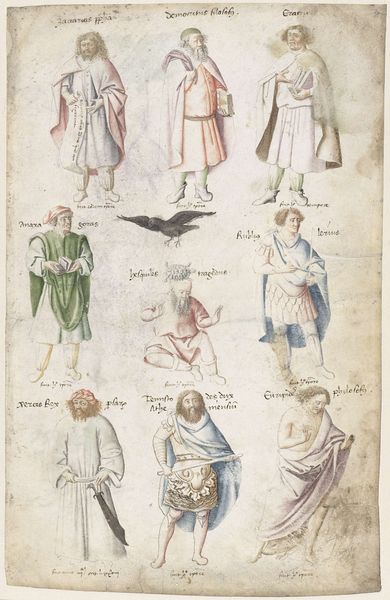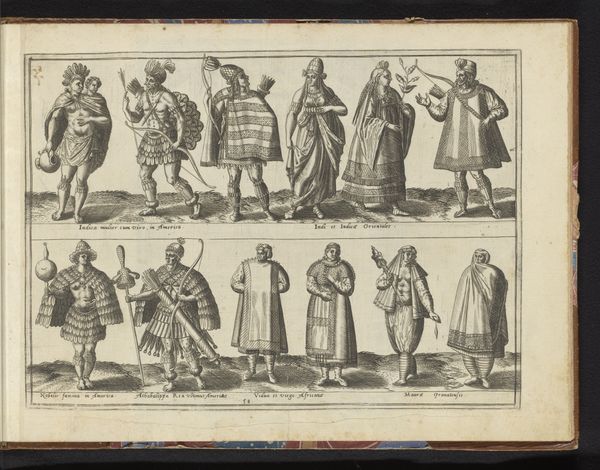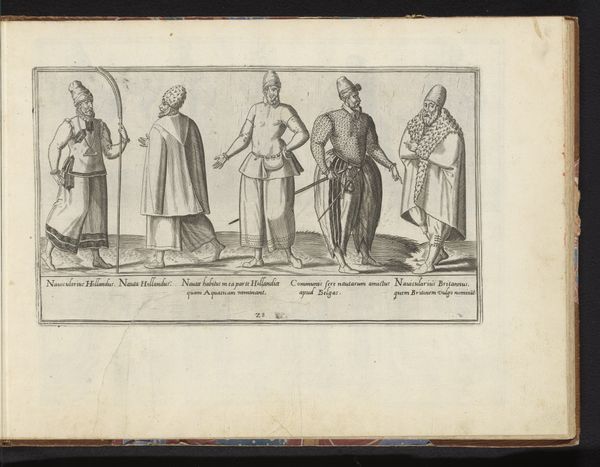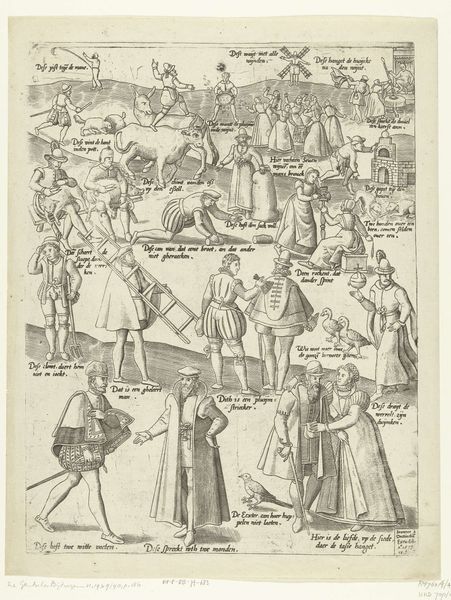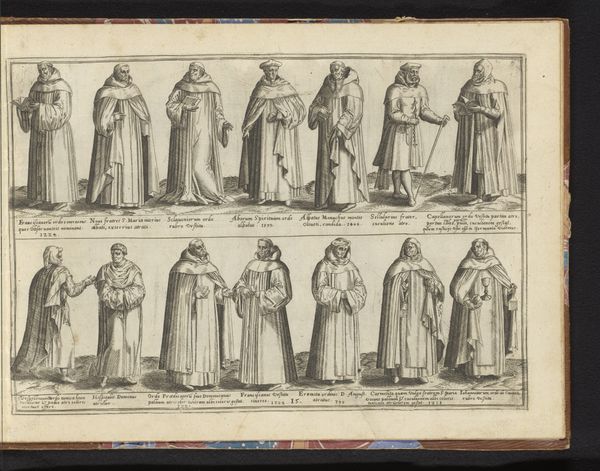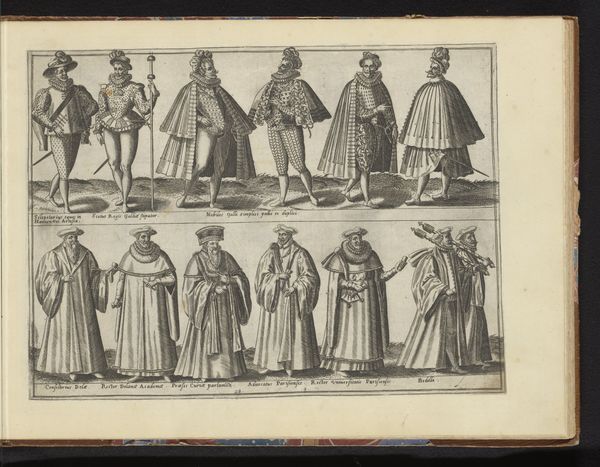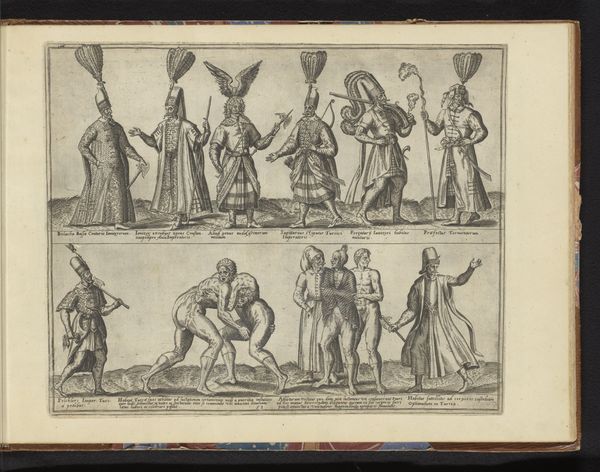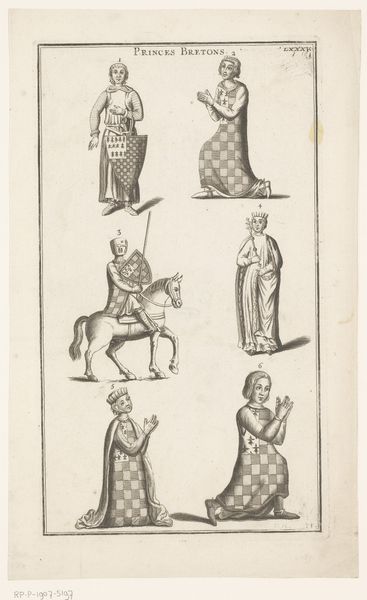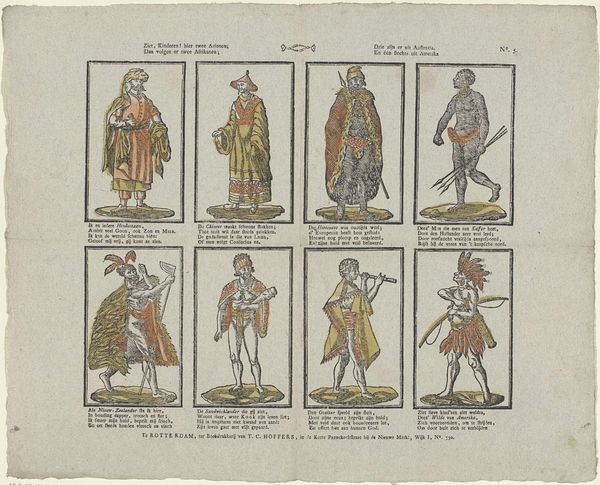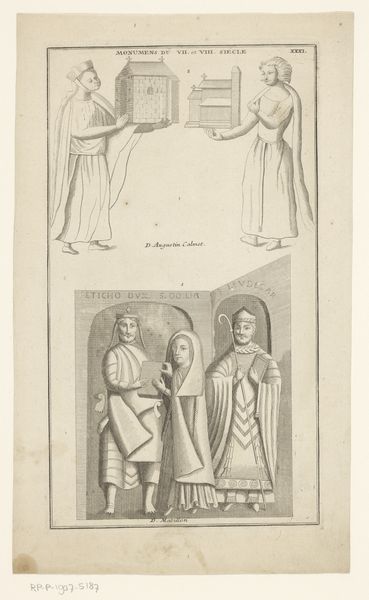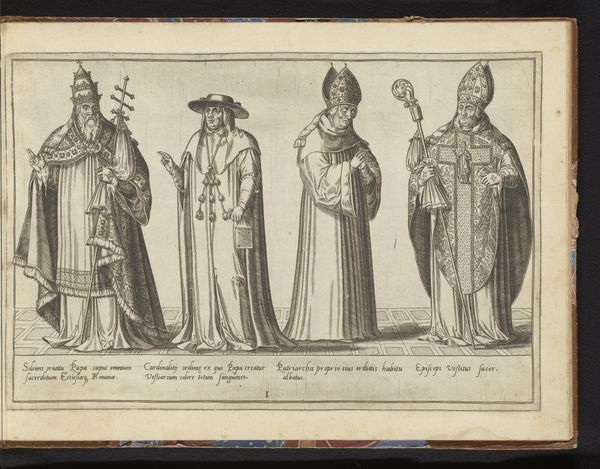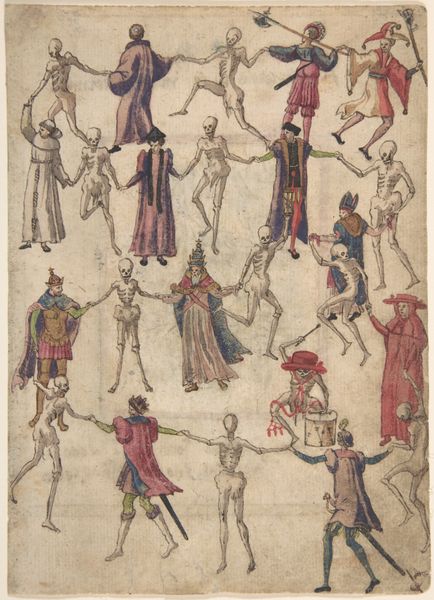
Famous Men and Women from Classical and Biblical Antiquity. 1450s
0:00
0:00
drawing, painting, print, paper, watercolor
#
portrait
#
drawing
#
medieval
#
painting
# print
#
figuration
#
paper
#
watercolor
#
coloured pencil
#
men
#
sketchbook drawing
#
history-painting
#
miniature
Dimensions: 12-3/8 x 7-13/16 in. (31.4 x 19.9 cm)
Copyright: Public Domain
Curator: Look at the arrangement of figures on the page. There is something serene and organized in the placement of figures. A medieval sensibility is in effect with distinct blocks or layers that comprise this artwork, but at the same time, this creates a powerful sensation. Editor: This is a page attributed to Barthelemy d'Eyck, dating back to the 1450s, called "Famous Men and Women from Classical and Biblical Antiquity." Currently, it is housed here at The Met. The artist’s choice of watercolor and ink on paper gives it a delicate yet enduring quality. Curator: Immediately, I’m struck by the potent use of symbolism and the way classical narratives have been reimagined. In the top register, Rome herself, suckling Romulus and Remus under the protective gaze of the she-wolf, becomes not just an emblem of the city’s origin, but of human endeavor and the nourishing power of myth. Editor: And that composition is striking. D'Eyck uses line and watercolor to define the volumes of bodies, allowing them a great degree of individuality in how he delineates fabric folds and the details of faces. Look at the confident hand as well with these linear elements. Curator: Precisely, each historical figure is bestowed with an attribute, sometimes direct, sometimes allegorical, linking them to a cultural lineage that is being consciously constructed here. Note, for example, how their faces are rendered not as strict portraits but as representations embodying certain qualities and virtues attributed to them. Editor: The interplay between image and text is critical. The scrolls these figures carry, bearing inscriptions and perhaps pronouncements, reinforce the relationship between visual symbol and narrative voice that permeates throughout medieval art and manuscript. There's a deliberate tension between these carefully depicted individuals and the inscriptions which demand a reading in terms of structure and clarity. Curator: I find this a reminder of how our understanding of historical figures and biblical icons shifts and reforms across time. They are not fixed but reimagined by each new cultural lens, serving purposes shaped by that particular moment. Editor: This is indeed a layered artwork where technique and careful construction of visual meaning intersect in complex and evocative ways. Curator: Yes, and its enduring fascination is assured.
Comments
No comments
Be the first to comment and join the conversation on the ultimate creative platform.
